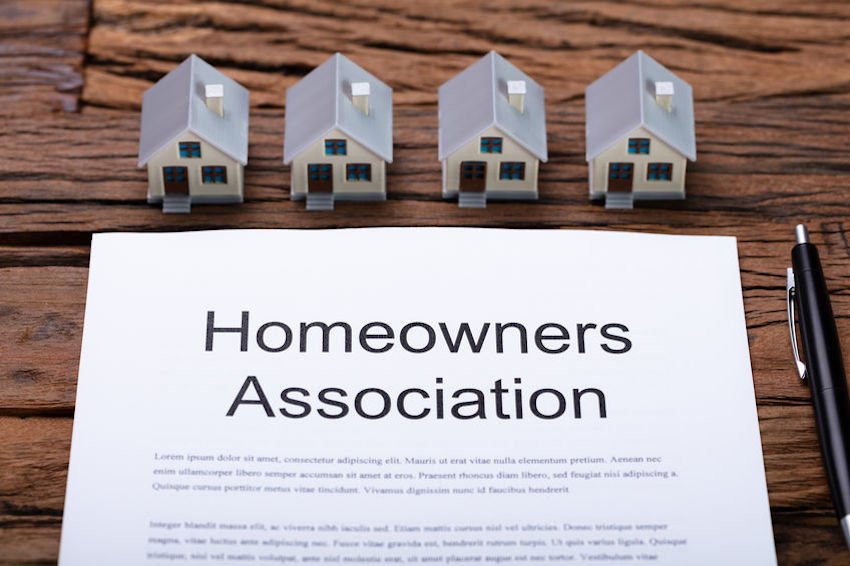Understanding the Duty of Condo HOA in Community Administration
Understanding the Duty of Condo HOA in Community Administration
Blog Article
Exactly How Condominium HOA Controls Shared Areas and Improves Neighborhood Consistency
The governance of common spaces within a condo organization plays a crucial function in promoting community cohesion and keeping property values. Via the establishment of extensive standards, the Condominium HOA not just regulates the usage of communal amenities however likewise advertises a culture of respect and accountability among locals.
Duty of the HOA
The property owners organization (HOA) acts as the regulating body for condo communities, playing a vital role in preserving the residential or commercial property and advertising a natural living environment. It is accountable for enforcing and passing neighborhood regulations and regulations, which are created to protect the visual worth and functionality of the shared area. This administration makes certain that all citizens comply with a standardized set of expectations, promoting a feeling of unity amongst varied homeowners.
Additionally, the HOA manages the financial elements of the neighborhood, including budgeting, collecting fees, and preserving typical areas. This monetary oversight is important in making certain that necessary maintenance and renovations are executed without delay, boosting residential or commercial property worths in time. The HOA also works as an intermediary in between homeowners and exterior entities, such as regional government and service providers, addressing public concerns efficiently.
Furthermore, the HOA commonly arranges neighborhood events and programs, motivating neighborly interactions and building relationships amongst citizens. By promoting open interaction and dealing with grievances, the HOA adds to a harmonious living environment. Hence, its diverse role is important in guaranteeing the smooth procedure and total fulfillment within condominium areas.
Regulations for Shared Rooms
Effective administration in condominium communities demands clear guidelines for shared spaces, which are essential for preserving order and promoting a feeling of community amongst locals. These regulations work as standards that make certain everybody can enjoy typical locations, such as pools, yards, and recreational centers, without conflict.

Additionally, sanitation and upkeep criteria are important, frequently specifying that homeowners need to clean up after themselves and report any kind of damages to the home owners' organization. By plainly interacting these assumptions, the HOA can minimize misconceptions and urge respect amongst residents.
Eventually, distinct regulations for shared spaces contribute to the total quality of life in a condominium neighborhood, permitting locals to exist side-by-side peacefully while appreciating the amenities that improve their living experience. condo hoa.
Value of Area Standards

Neighborhood guidelines play a considerable duty in cultivating a natural and considerate setting within condo organizations. These guidelines establish clear expectations for residents, promoting a feeling of liability and look at this website shared duty. By marking acceptable habits and practices, community standards aid protect against misconceptions and problems amongst homeowners.
Furthermore, these standards work as Bonuses a framework for maintaining the useful and aesthetic integrity of common rooms. They make sure that all locals abide by standards regarding residential property maintenance, sound degrees, and usage of public centers. This uniformity not only improves the visual allure of the neighborhood however also adds to general residential property values, profiting all property owners.

Dispute Resolution Techniques
Navigating problems within a condominium organization calls for an organized strategy to make sure fair and reliable resolution. Reliable conflict resolution strategies commonly begin with open interaction, motivating locals to voice problems in a considerate fashion. Developing an assigned network for complaints, such as a tip box or an online discussion forum, can facilitate this procedure.
Mediation is one more crucial approach, wherein a neutral third event aids challenging locals get to a mutually agreeable remedy. This technique cultivates collaboration and understanding, decreasing hostility - condo hoa. The HOA board ought to likewise establish clear treatments for attending to issues, guaranteeing all events are aware of the actions entailed
Routine problem resolution training for board participants can boost their ability to deal with conflicts effectively. Utilizing a well-defined framework, such as the "Interest-Based Relational Technique," assists concentrate conversations on passions instead than settings, promoting a solutions-oriented way of thinking.
Advantages of Area Consistency
Cultivating area consistency within a condominium organization brings countless benefits that enhance the overall living experience for locals. An unified neighborhood motivates cooperation and cooperation among next-door neighbors, bring about an extra congenial atmosphere. When residents really feel recognized and linked, they are more probable to involve in public tasks and participate in decision-making processes, leading to a stronger feeling of belonging.
In addition, community harmony dramatically lowers problems and misunderstandings, which can or else disrupt every day life. A peaceful setting lessens tension and advertises mental well-being, enabling locals to enjoy their homes totally. Additionally, unified connections commonly translate right into raised property values, as possible purchasers are drawn to neighborhoods characterized by security and collaboration.

Conclusion
With the facility of clear rules and neighborhood standards, homeowners are encouraged to preserve a responsible and respectful atmosphere. Inevitably, the initiatives of the HOA contribute to a natural neighborhood, advertising both residential or commercial property worths and total resident satisfaction.
Furthermore, the HOA typically organizes community events and programs, motivating neighborly interactions and developing connections among citizens. By defining appropriate actions and practices, area standards aid prevent misunderstandings and conflicts among locals.
Furthermore, neighborhood guidelines facilitate effective communication amongst homeowners and the Homeowners Association (HOA) Via the facility of clear regulations and area standards, locals are encouraged to maintain a accountable and considerate setting. Eventually, the efforts of the HOA add to a natural neighborhood, promoting both residential or commercial property values and overall resident satisfaction.
Report this page